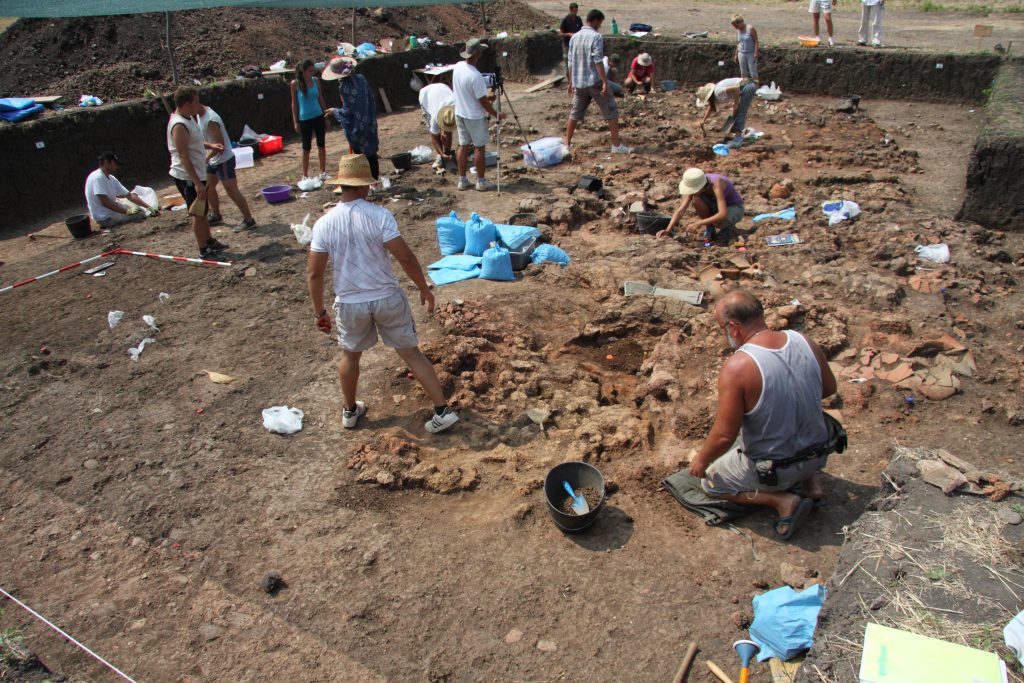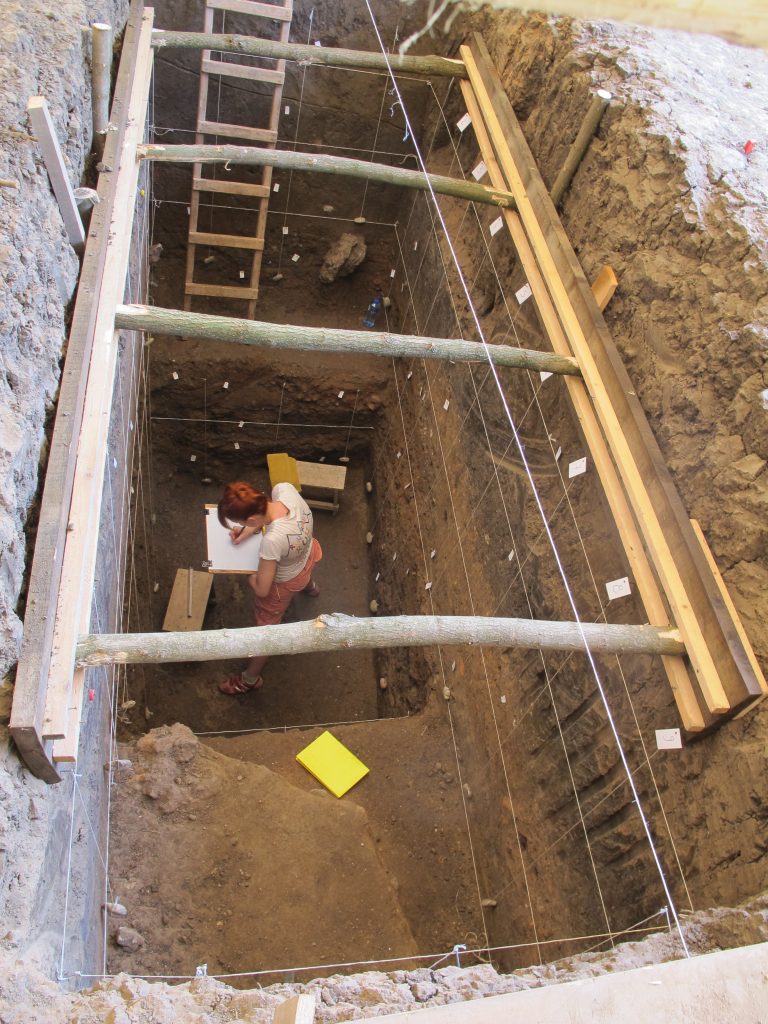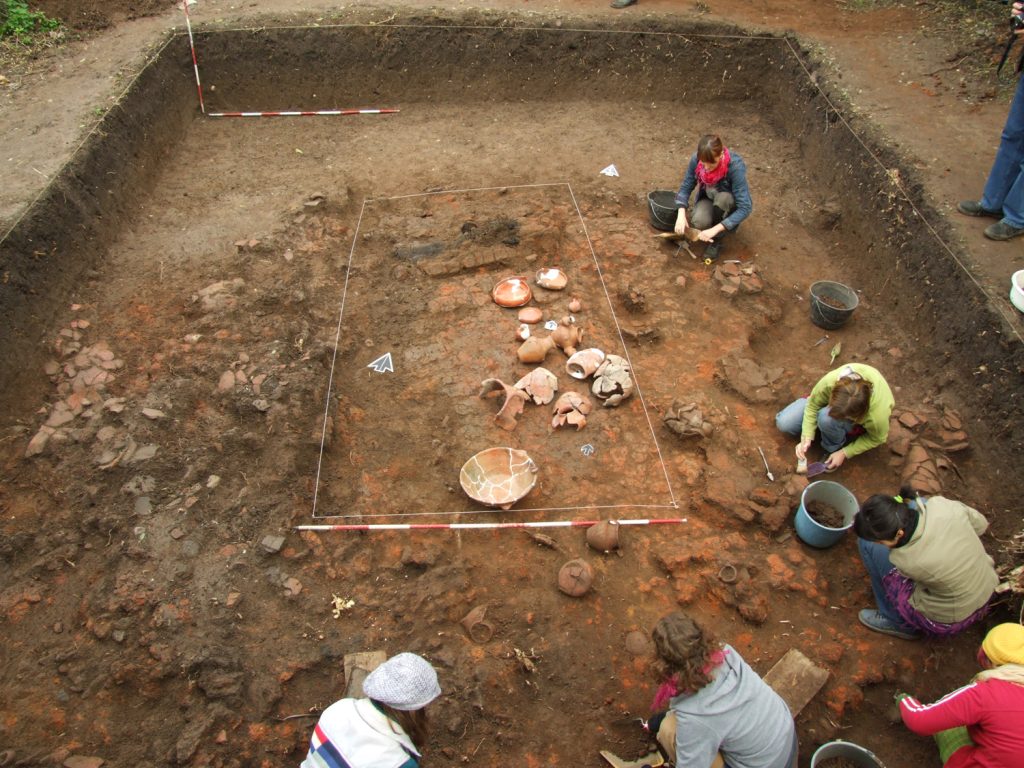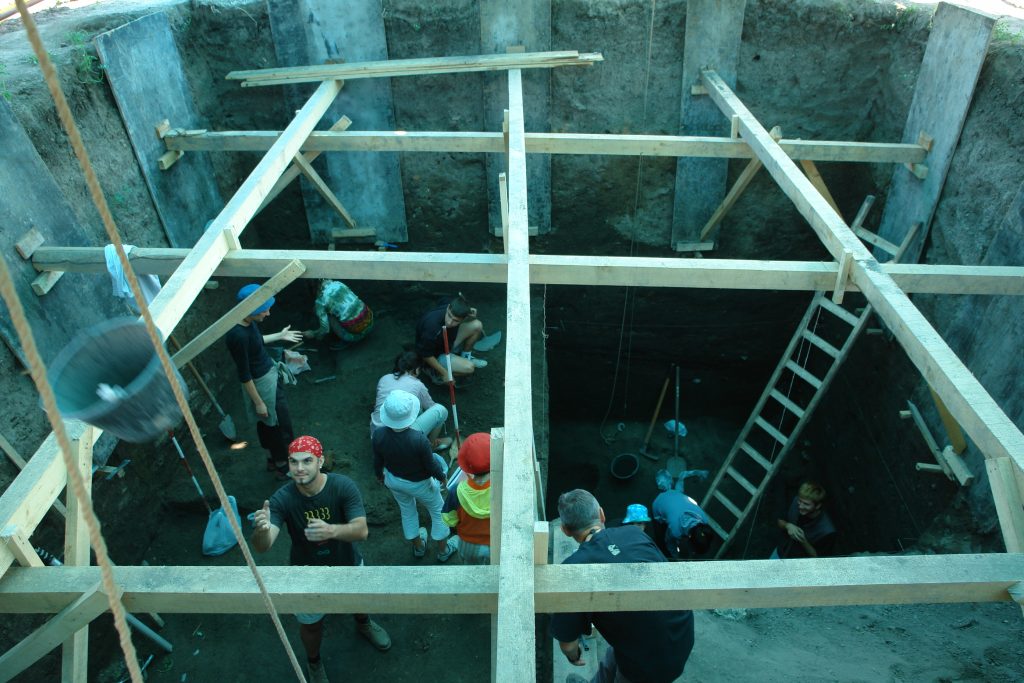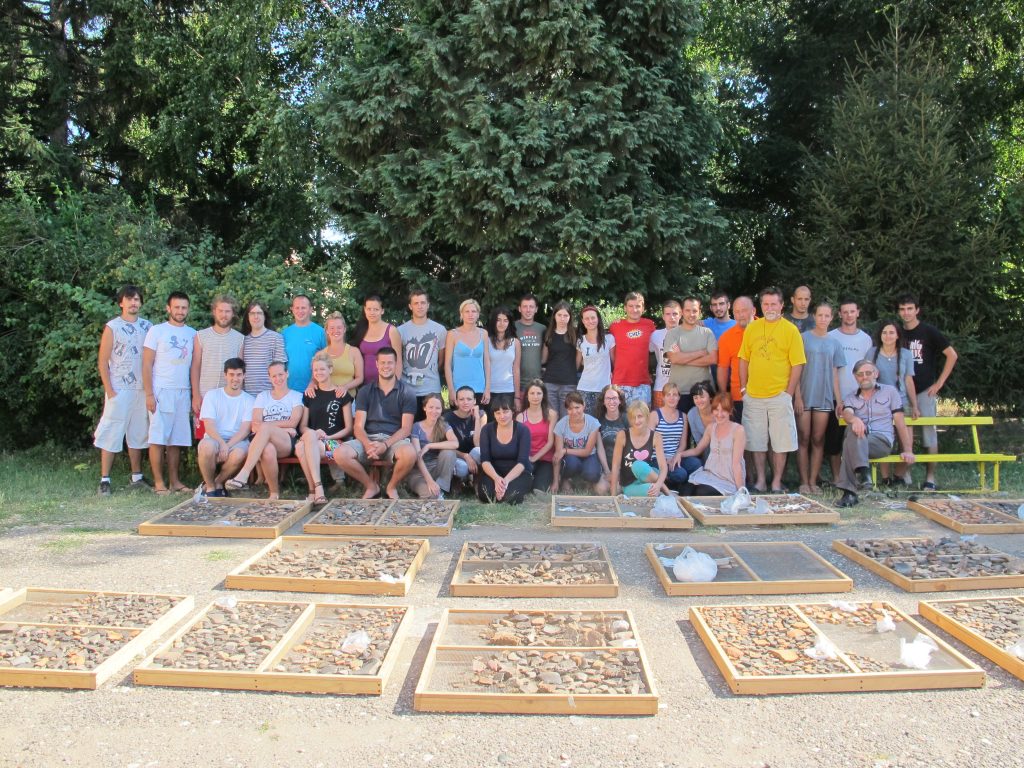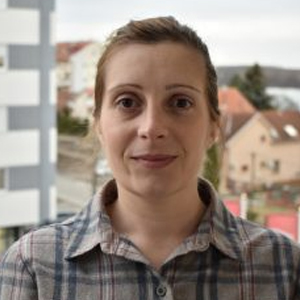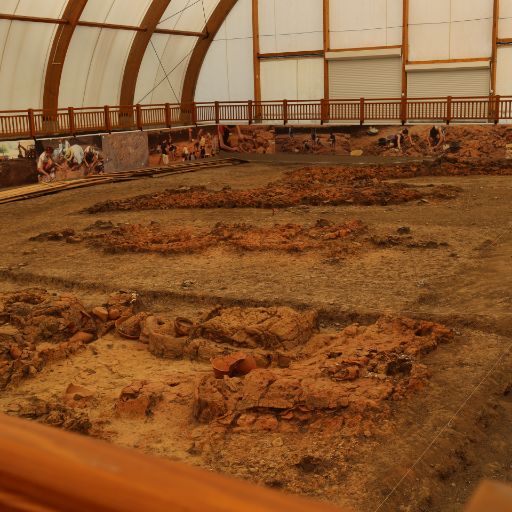
DRENOVAC
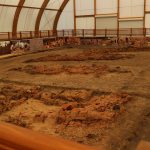
Project :
- Permanent archaeological workshop – Central Morava Valley in the neolithization of Southeastern Europe (Ministry of Culture and Information)
- Conservation, restoration and presentation of Neolithic architecture in Drenovac (Ministry of Culture and Information)
Project Director: Dr. Slaviša Perić
Team :
Dr. Olga Bajčev
Dr. Đurđa Obradović
Dr. Ivana Dimitrijević
MA Ruzica Savić
Co-operation:
Institute of Archaeology, Belgrade
Museum of Jagodina
Paraćin Museum
The archaeological site of Slatina-Turska česma in Drenovac is located in the Middle Morava Valley, about 9 km south of Paraćin. It stretches along the dried-up Drenovac stream, which flows from the mountainous hinterland into the vast Velika Morava alluvial plain. The central part of the site is crossed in a north-south direction by the Belgrade-Niš highway (E75). Archaeological layers that bear witness to traces of life from the Neolithic, Early Iron Age, Roman, and medieval periods, up to 6.5 m thick, have been documented in Drenovac. However, the site is best known for the remains of the Neolithic settlement, which is roughly related to the period of 6,200–4,500 years B.C.
The site was discovered in the 1960s, and the first extensive research was organised from 1968 to 1973 as a joint project of the Regional Museum in Jagodina and the National Museum in Belgrade. In that period, 14 sondages were explored, with a total area of 290 m2. The results were presented by S. Vetnić, who stated that the remains of the Starčevo and Vinča settlements were found on the site.
The revision of archaeological excavations in Drenovac began in 2004 under Dr Slaviša Perić. New research is carried out by the team of the Archaeological Institute in Belgrade as part of the project “Archaeological Workshop: The Middle Morava Valley Role in the Neolithization of Southeast Europe.” Since 2004, during revision and systematic research, 10 control trenches and 14 sondages of different dimensions, with a total area of about 1200 m2, have been explored (sondages XV-XXVIII).
The previously assumed continuity between the settlements of Starčevo and Vinča has not yet been confirmed. Stratigraphic data has showed the existence of a hiatus between the layers of the Starčevo and Vinča settlements on the site, and the latest C14 dates indicate that this hiatus spanned at least 400 years. Early Neolithic strata are dated to 6200–5800 B.C., and the Vinča settlement is in the period 5300–4700/4500 B.C. The size of the settlement varied over time, with the area of the Vinča settlement reaching 40 ha in certain phases.
Geophysical research made it possible to assess the size and organisation of the Late Neolithic settlement and plan targeted excavations. About 700 objects of various purposes have been registered on the geomagnetic plan. Zones with regular house arrangement patterns and approximately uniform house dimensions (most often 10–12 x 5 m), oriented in a southwest–northeast direction, and densely distributed in parallel rows, are recognised within the settlement. On the other hand, there are zones on the outskirts of the settlement where the buildings do not have a regular shape, size, or layout. Also, geophysical surveys have indicated the existence of several trenches: one surrounding the western periphery of the settlement and two surrounding specific parts of the territory.
More than 10 Late Neolithic houses have been excavated as part of the new excavations, which enabled the research of the construction method and the organisation of the daily activities of the inhabitants. The houses were built using the wattle and daub technique, with a floor made of compacted clay. Usually, they had one to three rooms on the ground level, with a two-story construction occurring occasionally. Various finds inside the houses indicate that certain activities, such as weaving, storing, and preparing food, took place inside residential buildings and were repeated in different rooms of a house. Four examined houses are conserved to present the research results in Drenovac, and a protective structure has been erected over them.
More recent research is based on modern methods of prospection, excavation, recording, and digitisation of data. Specialists have analysed different types of finds and samples. To study in detail the economic and social importance of plants and animals in Neolithic settlements, an archaeozoologist and an archaeobotanist have been employed as integral parts of the field team.
The results indicate that the inhabitants of the late Neolithic settlement were engaged primarily in agriculture and animal husbandry, while hunting played a much smaller role in the economy. Analyses of lipids deposited on the walls of ceramic vessels confirmed that they used dairy products and honey as a supplement to their diet of meat and plants.
An essential aspect of the research on the Drenovac site is examining the natural environment around the Neolithic settlement, which is carried out in cooperation with colleagues from the University of Cambridge. The joint project “Palaeo-landscape reconstruction of Neolithic Drenovac and its surroundings in the Middle Morava Valley, Serbia” aims to examine the impact of erosion on the surface formation of the site and to reconstruct the landscape of the past.
Selected bibliography:
Vetnić, S. 1974. Počeci rada na istraživanju kulture prvih zemljoradnika u srednjem Pomoravlju. Materijali SADJ X: 123–163.
Vetnić, S. 1990. The earliest settlements of the Vinča culture (Proto-Vinča) in the Morava valley, in: Vinča and its world: International Symposium the Danube Region from 6000 to 3000 B.C., ed. D. Srejović, N. Tasić, 91-97. Belgrade: Serbian Academy of Science and Arts.
Perić, S. 2009.The Oldest Cultural Horizon of Trench XV at Drenovac. Старинар LVIII: 29–50.
Перић, С., Обрадовић, Ђ., Бајчев, О. 2013.Ревизиона археолошка истраживања на неолитском налазишту Слатина – Турска чесма у Дреновцу код Параћина. Етно-културолошки зборник XVII: 83–86.
Perić, S., Rummel, C., Schafferer, G., Winger, D., Wendling, H. 2016.Geomagnetic survey of Neolithic settlements in the middle Morava Valley – preliminary results, in: The Neolithic in the Middle Morava Valley: new insights into settlements and economy. The Neolithic in the Middle Morava Valley No. 2, ed. S. Perić, 9–28. Belgrade: Institute of Archaeology.
Stojanović, I., Obradović, Đ. 2016. Integrating archaeozoological and archaeobotanical data: different perspectives on past food practices. Case study: The Early Neolithic context from Drenovac, central Serbia, in: The Neolithic in the Middle Morava Valley: new insights into settlments and economy. The Neolithic in the Middle Morava Valley No. 2, ed. S. Perić, 79–102. Belgrade: Institute of Archaeology.
Perić, S. 2017.Drenovac: a Neolithic settlement in the Middle Morava Valley, Serbia. Antiquity 91 (357): 1-7.
Krueger, М., Bajčev, О., Whelton, H., Evershed, R. 2019. Organic residue analysis of pottery from the Neolithic settlements of Drenovac and Motel-Slatina (Middle Morava Valley, Serbia), in: The Neolithic in the Middle Morava Valley No. 3, Interdisciplinary contributions to research and preservation of archaeological heritage, ed. S. Perić, 61–76. Belgrade: Institute of Archaeology.
Perić, S., Miletić, V. 2019. Geophysical surveys at Drenovac in 2012 and 2013, in: The Neolithic in the Middle Morava Valley No. 3, Interdisciplinary contributions to research and preservation of archaeological heritage, ed. S. Perić, 29–45. Belgrade: Institute of Archaeology.
Ćosić, N., Perić, S. 2019.Problems and challenges in the management of prehistoric sites. Example of the Neolithic site Slatina-Turska česma in Drenovac near Paraćin, in: The Neolithic in the Middle Morava Valley No. 3, Interdisciplinary contributions to research and preservation of archaeological heritage, ed. S. Perić, 77–94. Belgrade: Institute of Archaeology.
French, C., Ostericher, I., Murch, L., Rajkovača, T., Perić, S. 2019. Geoarchaeological evaluation of the soil profiles and collapsed Neolithic structures in Trenches XIX, XXII and XXIII at Drenovac, Serbia, in: The Neolithic in the Middle Morava Valley No. 3, Interdisciplinary contributions to research and preservation of archaeological heritage, ed. S. Perić, 9–26. Belgrade: Institute of Archaeology.
Perić, S., Bajčev, O., Stojanović, I. Obradović, Đ. 2020.Neolithic settlement at Drenovac, Serbia: settlement history and spatial organization, in: Making Spaces into Places. The North Aegean, the Balkans and Western Anatolia in the Neolithic, eds. D. Urem-Kotsou, N. Tasić, M. Burić, 181–186. Oxford: British Archaeological Reports.
Perić, S., Bajčev, O. 2021. Interiors of Neolithic houses at Drenovac. Studia Praehistorica 15, 2021: 123-147.


